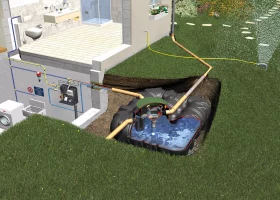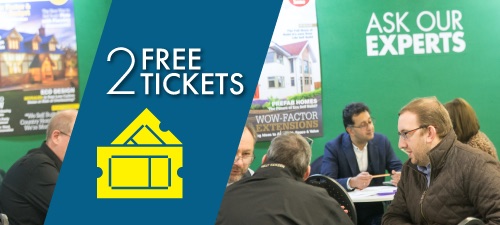
9th & 10th September, Westpoint Arena, Exeter. 100s of suppliers, seminars, expert advice. Explore all the options, all in one place – only at Build It Live.
Book your free tickets now
9th & 10th September, Westpoint Arena, Exeter. 100s of suppliers, seminars, expert advice. Explore all the options, all in one place – only at Build It Live.
Book your free tickets nowAiming for Passivhaus quality and approval means achieving the highest level of home efficiency, which is no small feat for even the most eco-conscious builder.
Passivhaus ideology relies largely on natural heat from the sun to warm the house, alongside strong insulation to minimise heat loss. In addition to dramatic savings on energy bills, living in a home built using these principles means a pleasant environment for occupants, with no chilly spots, draughts or wasted heat.
The impressive level of fit and finish means that in terms of airtightness, the build quality of a Passivhaus is second to none. So, if you’re looking to the future of building, aiming to save energy and seeking a rewarding investment, Passivhaus standards will be your best best.
Here, we go through 10 of the best Passivhaus homes in the UK, showing that something doesn’t have to look ultra-modern to be so.
Susana Geoghegan spent 20 years renovating projects until she decided to turn towards creating a home for herself.
This beautiful Arts and Crafts style Passivhaus property cost Susana £453,000 to complete, but she was determined to create a forever home that would be both comfortable and cost effective in the long run.
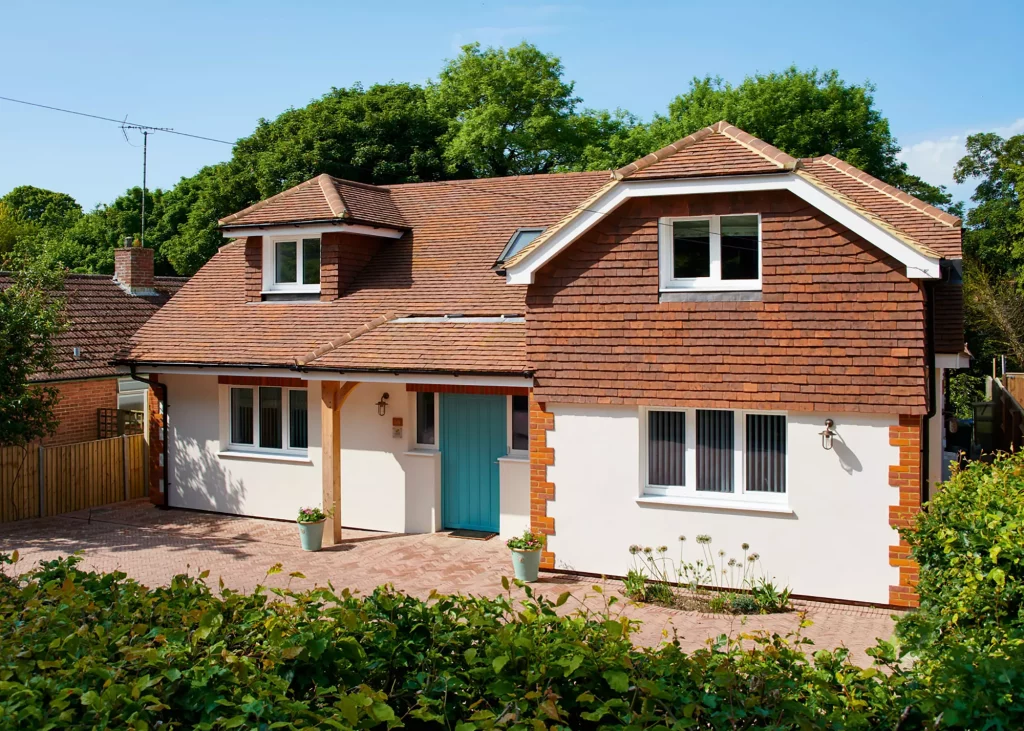
Fitted with Internorm’s high performing triple glazed windows, this home makes the most out of insulation methods to reach its Passivhaus standard
Susana discovered Passivhaus through meeting David Strong, who inspired her to consider building a home using eco philosophy.
Aiming for Passivhaus standards meant that Susana discussed her plans with Eco Design Consultants throughout the whole process, who could offer consistent direction and advice on how to successfully get this project its deserved approval.
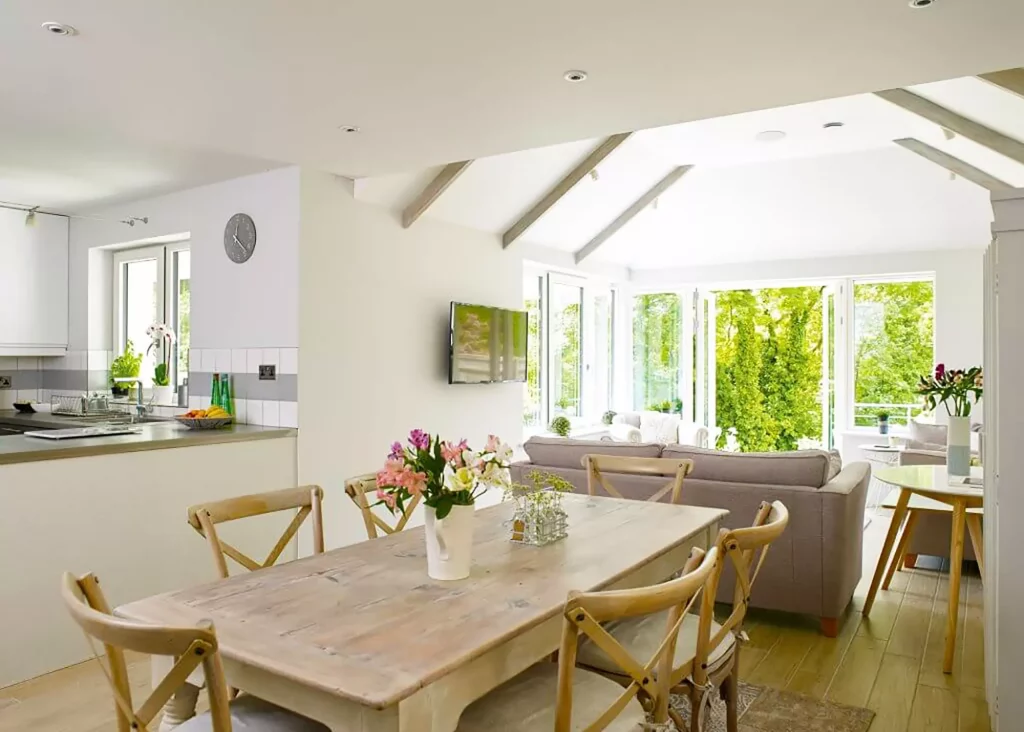
The L-shaped kitchen-diner gives Susan the space she might need later on, should she ever become a wheelchair user
The final house echoes a timeless and homely feel, including a hipped roof, wide soffits and period styling around the entrance. Inside, it features a charming open plan kitchen-dining area, and keeps a light, fresh and airy feel throughout using a combination of large glazings and mechanical ventilation and heat recovery (MVHR).
Read More: Mechanical Ventilation & Heat Recovery Systems Explained
Stephen Cirell set out to build an efficient Passivhaus when this derelict cottage came up for sale, planning a potential knock down and rebuild project with glass front and contemporary structure. Although, this didn’t end up going to plan.
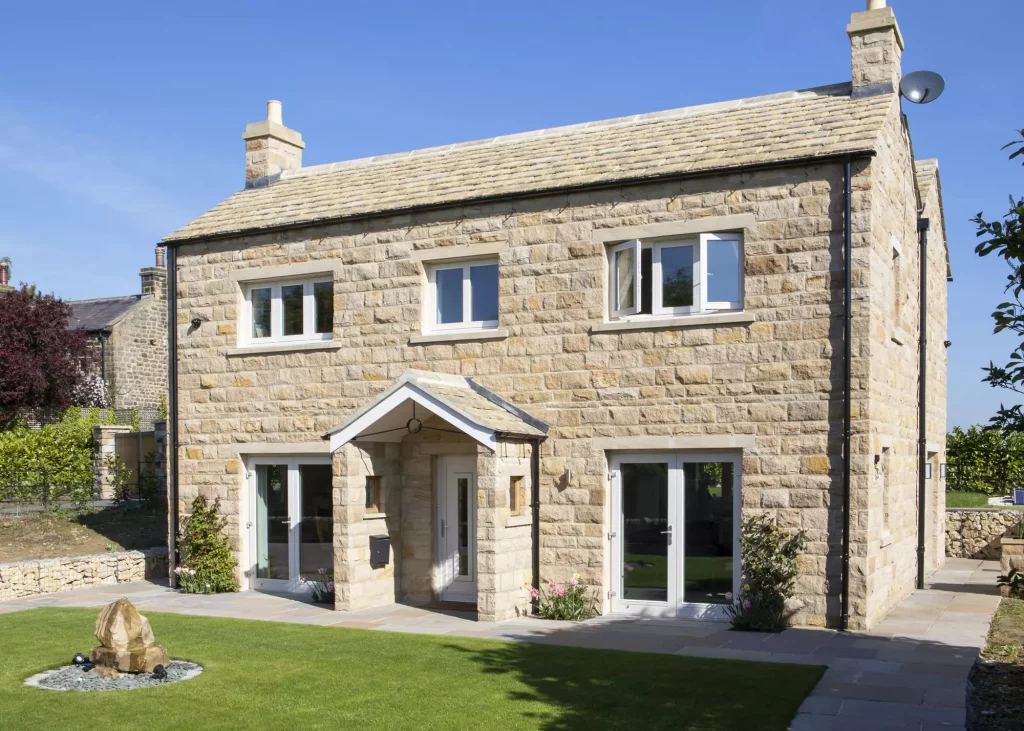
The front of the home uses breeze blocks to maximise insulation whilst the inside walls are plastered rather than plasterboarded to provide high levels of airtightness – a must for a Passivhaus
The project faced difficulties with planning permission, as the architecture and design needed to complement the surrounding buildings. This meant that the home would require a decorative chimney and stone exterior, differing largely from Stephen’s ultra-modern vision.
Getting full Passivhaus certification is notoriously difficult because of the stringent compliance tests. But thanks to Stephen’s attention to detail, he now has the first self build in the Leeds area to be certified as a Passivhaus.
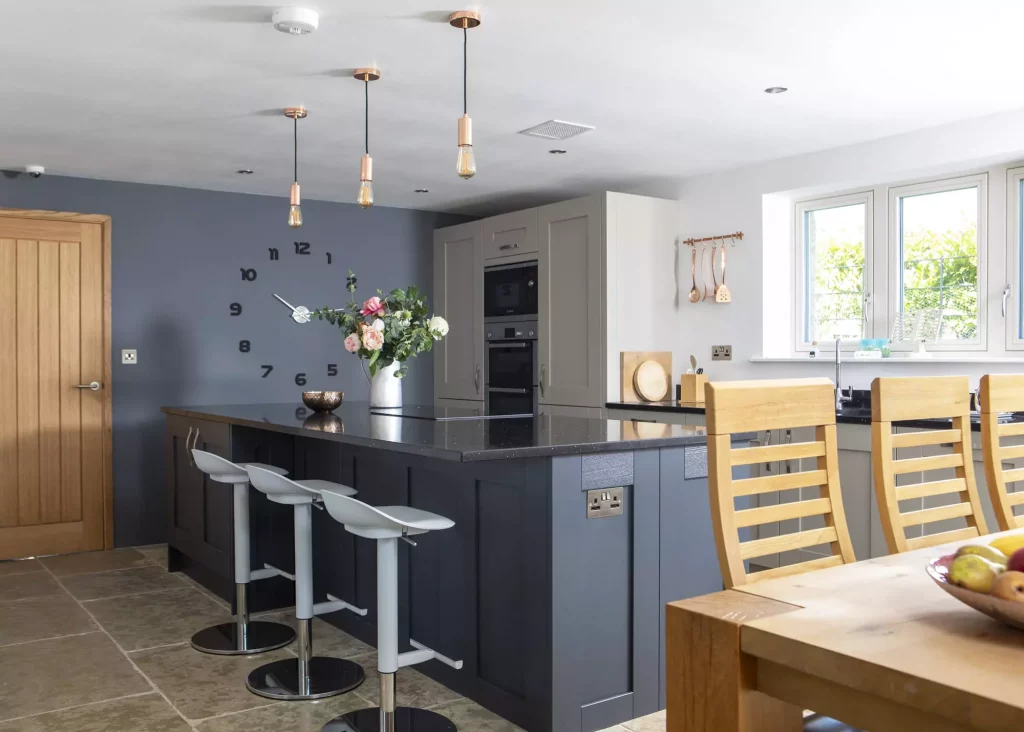
The downstairs features an open-plan layout. The door from the kitchen leads to the room that houses the hub of his MHVR system
This property has been constructed to recycle heat for maximum efficiency. Any warmth naturally generated in the home, from body heat, cooking and showering, is repurposed via a MVHR system, which also ensures that stale air is exchanged for a fresh, filtered supply.
The £385,300 project took one year to complete but has been worth the investment for Stephen. This property costs nothing to run in comparison to his previous £3,000 a year, and he says its benefits outweigh the challenges as the home is a healthy and comfortable place to live.
Having Trouble with Planning Permission? Read Our Guide on How to Interpret Planning Feedback
Paul and Belinda Wilson didn’t know anything about Passivhaus until the council rejected their initial plans and suggested they look towards an energy efficient build.
This turn of events worked in their favour, and the home won in the sustainability category at the Bedfordshire Design and Craftsmanship Awards in 2017.
The couple had owned their Bedford home with an acre-large garden for nine years before retirement encouraged them to make use of it. After back-and-forth discussions with the council and architects, they moved on to work with Alan Budden from Eco Design Consultants who would help create a home that would comply with the prestigious Passivhaus standards.
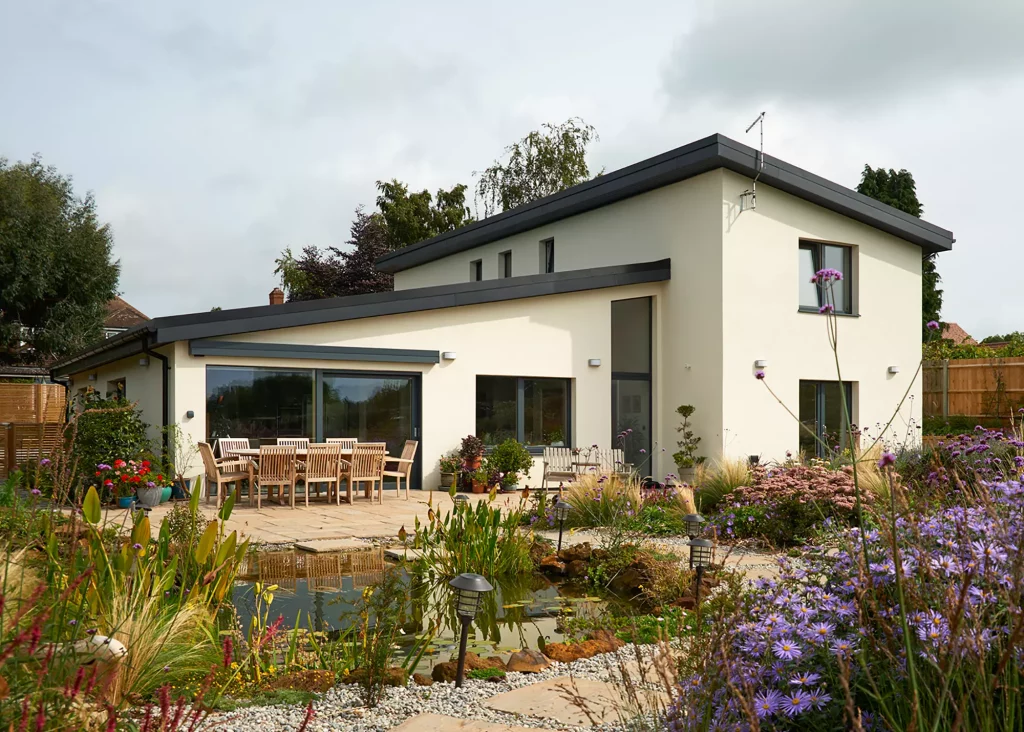
This airtight Passivhaus was errected by MBC timber frame and fit with high performing windows from Internorm
The project, which cost them £527,866, went on for eight months before the home could be lived in. They used a combination of Internorm’s triple-glazed windows and doors, alongside an MBC sealed timber frame structure for maximum insulation.
Andrew and Linda Burnett turned to self building after failing to find the perfect country home. The initial plot they looked at was too big of a size and budget, but the location was perfect.
So, after talking with the neighbour and discovering they were also interested in part of the land, they decided to split it between two and the Burnetts could begin planning right away.
When planning the project, Andrew met with Tim Crump (MD of Oakwrights) who began talking about Passivhaus standards and Oakwrights’ encapsulation system.
Andrew and Linda had never heard of Passivhaus. But both immediately fell in love with the idea of creating an energy efficient oak frame home, for both its function and beauty, to Passivhaus standards.
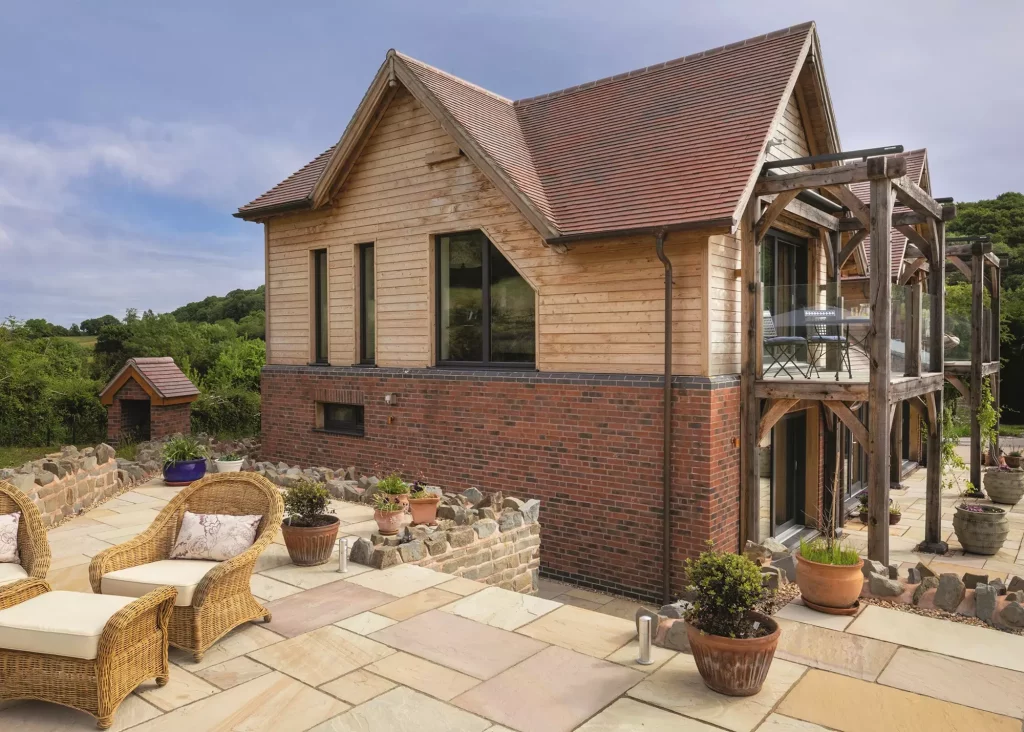
This Oakwrights Passivhaus was constructed to the highest standards, complete with an MVRH keeping fresh air maintained throughout the home
With the help of a planning consultant, the Burnetts spent around six months finalizing their design before submitting it to planning. As they had been meticulous in making sure their home would blend with the surroundings, the oak frame scheme received the green light with no issues.
To maximise the far-reaching views, Linda and Andrew opted for an upside-down layout with the kitchen, main living area and master suite on the first floor. The ground level accommodates two guest bedrooms, each with its own ensuite, plus a stunning double-height hallway and boot room.
Read More: How to Create an Energy Efficient Oak Frame Home
This couple weren’t prepared to settle for anything less than a sustainable home to live and run their farm from – and once they saw that it would be possible to achieve Passivhaus standards, they knew there was no option but to forge ahead.
Trevor and Judith Gospel, who own the 150-acre farm specialising in organic livestock, are delighted with their new super-efficient home – the first bespoke cavity wall Passivhaus to be constructed in the north east.
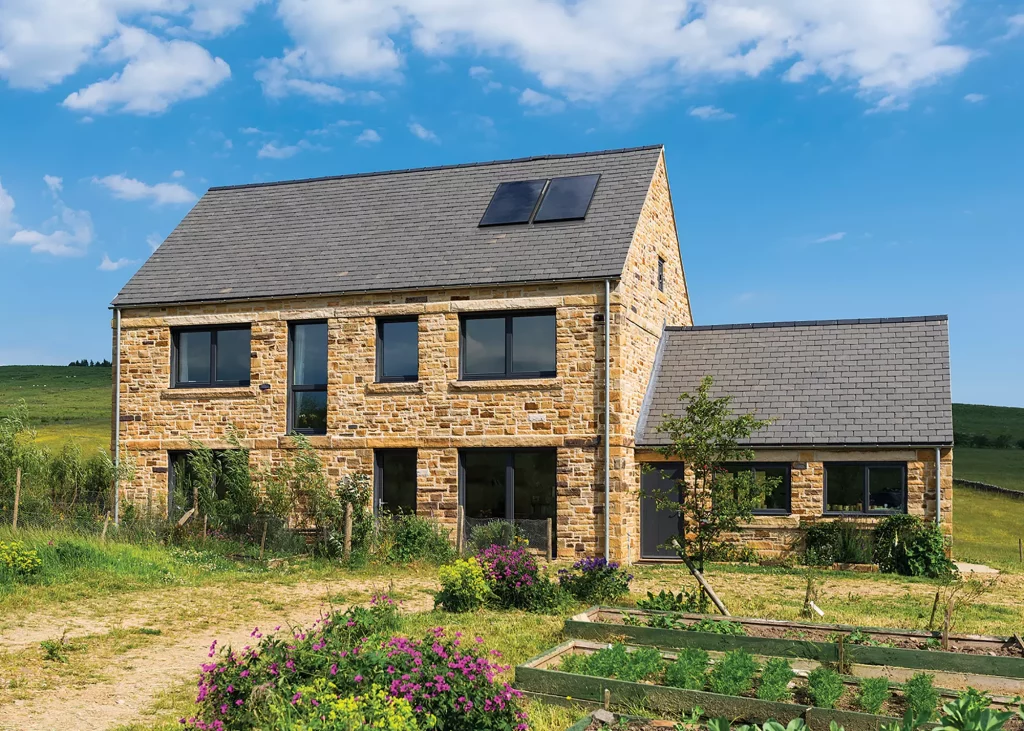
This countryside Passivhaus has been designed as a simple two-storey dwelling clad in locally-quarried blonde stone cladding, complete with classic slate roof
Although the couple considered a range of renewable heating technologies, including wind turbines, their preferred option was to install an LPG boiler and utilise the sun’s energy with solar thermal panels, which is backed up with an MVHR system.
Performance-wise, they estimate the annual cost for heating, hot water and cooking in Steel Farm is £395 (pre-2022), so their total investment of £308,965 should prove to be worthy in the long run.
Why is Passivhaus certification so important?It’s possible to utilise the low energy design principles of Passivhaus ideology without going for certification. However, paying for an independent consultant assessor to give your house the final seal of approval will give you the validation that your home is performing to a high level. The project data is put into the Passivhaus Planning Package (PHPP), including details of the materials used for the thermal envelope. This will cover the walls, floors and roof, as well as the windows and doors. “Their individual thermal characteristics and their vapour permeability will be included. You are penalised by PHI if you can’t provide the physical properties according to a specific laboratory testing data,” says Guy Fowler, technical director Advanced Housing Systems. Evidence that the house has been constructed as outlined in the PHPP will also need to be provided. This data goes to the Passivahus Institute for final confirmation, at which point the property is certified. |
Certified Passivhaus and Multi-award winning House, The Deerings, is a detached Passivhaus that replaces a former bungalow, and is a contemporary addition to a traditional suburban street scene in Hertfordshire.
This simple two storey rectangular form and design optimises its performance by adopting a ‘fabric first approach’ while also meeting the family’s space and lifestyle aspirations.
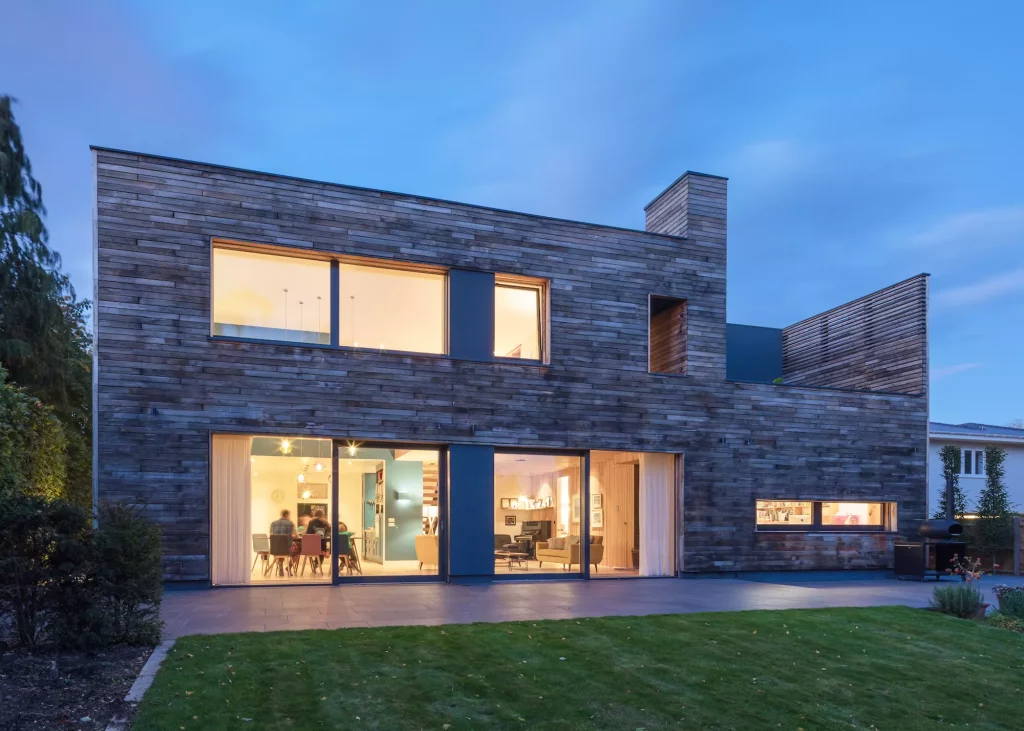
This ultra-modern project has been fit with extensive triple glazing around the property to bring light into its open-plan interior
Through utilising ecoHaus’s Timber Composite Passivhaus window system, they were able to make the most of high performance glazing to with large sliding doors to the rear of the house without compromising the performance of the overall building.
Architect Adrian Cook designed this Passivhaus certified new build two-bedroom house in Crickhowell, a conservation area in Powys.
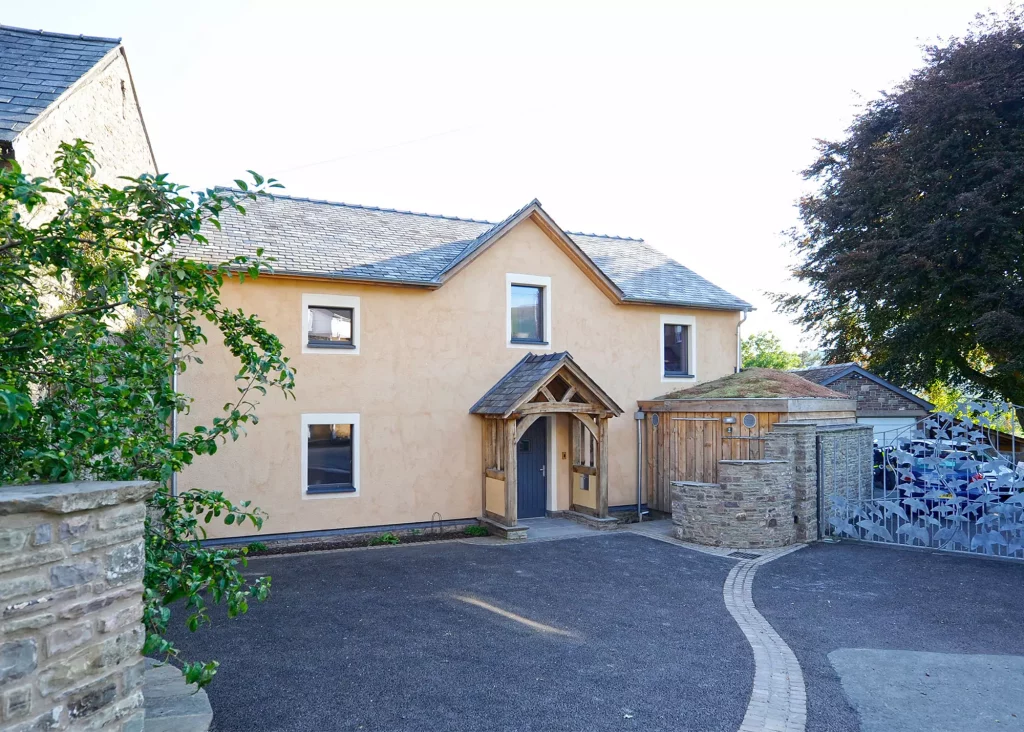
The front of the property keeps in clever tradition with the surrounding properties using a neutral roughcast render covering and simple structure
The building structure was built by Mike Whitfield, with the rest left to the self builder client who would finish off the decoration, fixtures and fittings.
In response to the conservation area setting the more traditional front elevation of the house is finished with roughcast render, with timber boarding facing the fields to the rear, with a green roof topping the single storey living room.
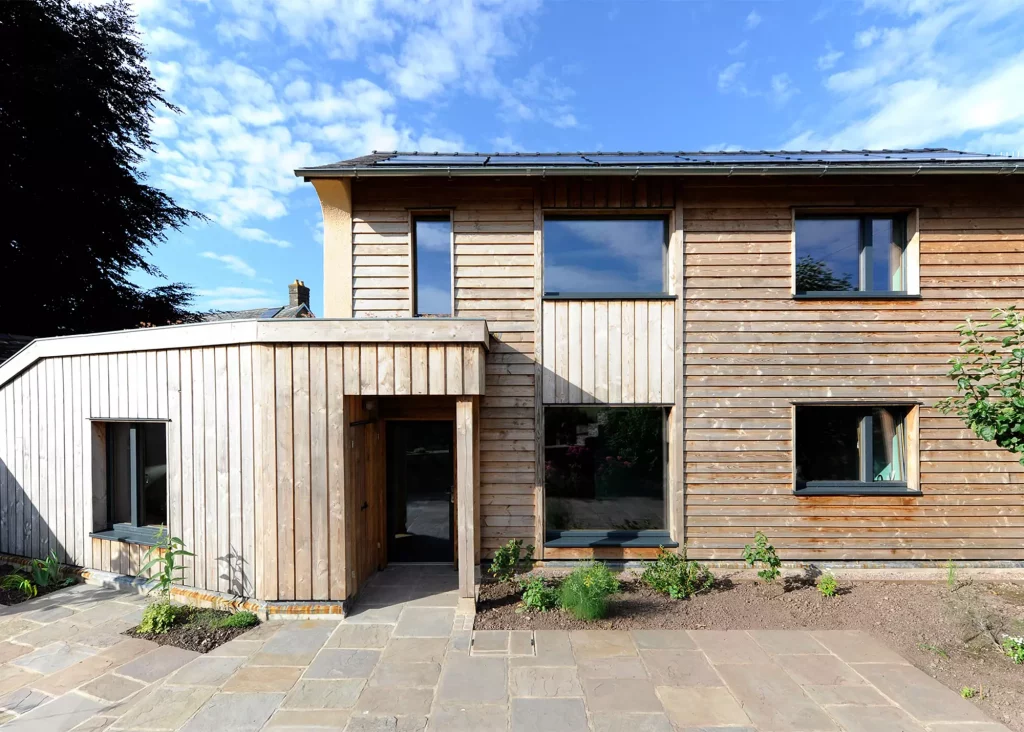
Passivhaus certified timber windows from Green Building Store were chosen for the project in multiple sizes, allowing the couple to enjoy views over the fields towards the back of the home
Green Building Store supplied, designed and commissioned the Novus 300 MVHR system for the project, helping the Passivhaus to use the air efficiently all year round.
Read More: The Ins and Outs of Get Planning Permission in a Conservation Area
As this plot is within an Area of Outstanding Natural Beauty, it was clear that the design would need to be an exemplary piece of contemporary architecture that was sensitive and responsive to its location, as well as highly energy efficient.
Stour House is twice the size of the previous cottage so great care was taken to break up the structure of the home, articulating the elevations by visually separating the ground and first floors.
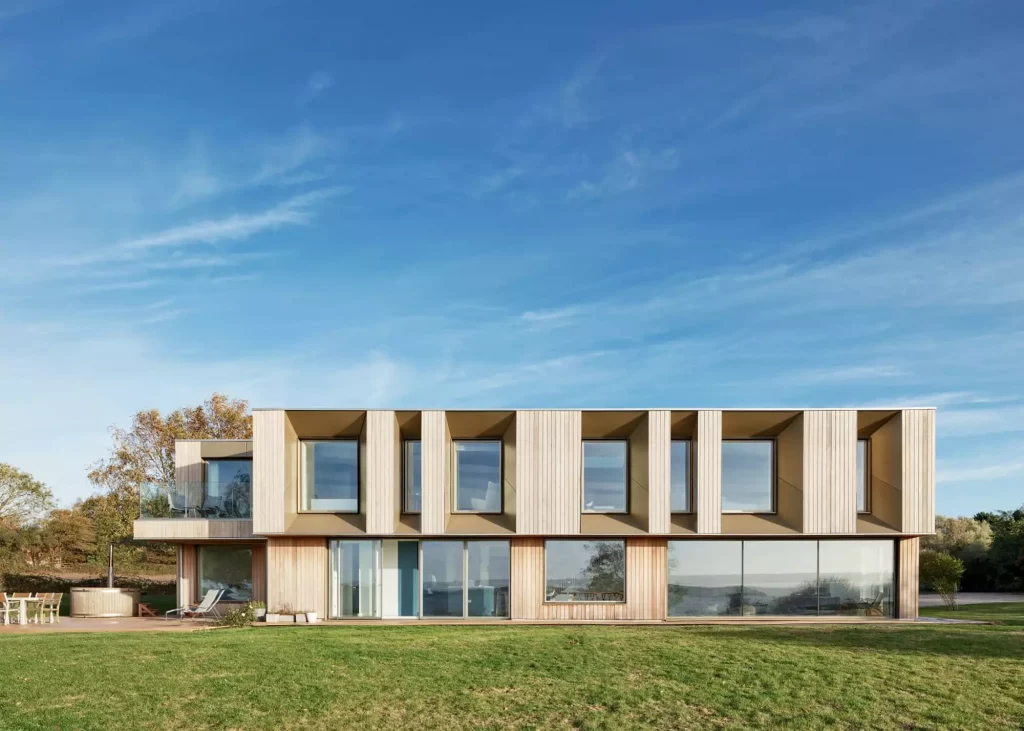
This impressive home set out to utilise the surroundings vast supply of natural light, with contemporary style glazing set deep in its timber structure
Extensive glazing on the ground floor allows stunning views out to the river whilst maximising solar gain for this eco home, utlising its generous exposure to the surroundings.
Deep set windows on the first floor, which open out at angles, help frame those picture perfect scenes while plastered-in window frames on the inside create the appearance of seamless windows on the ground floor.
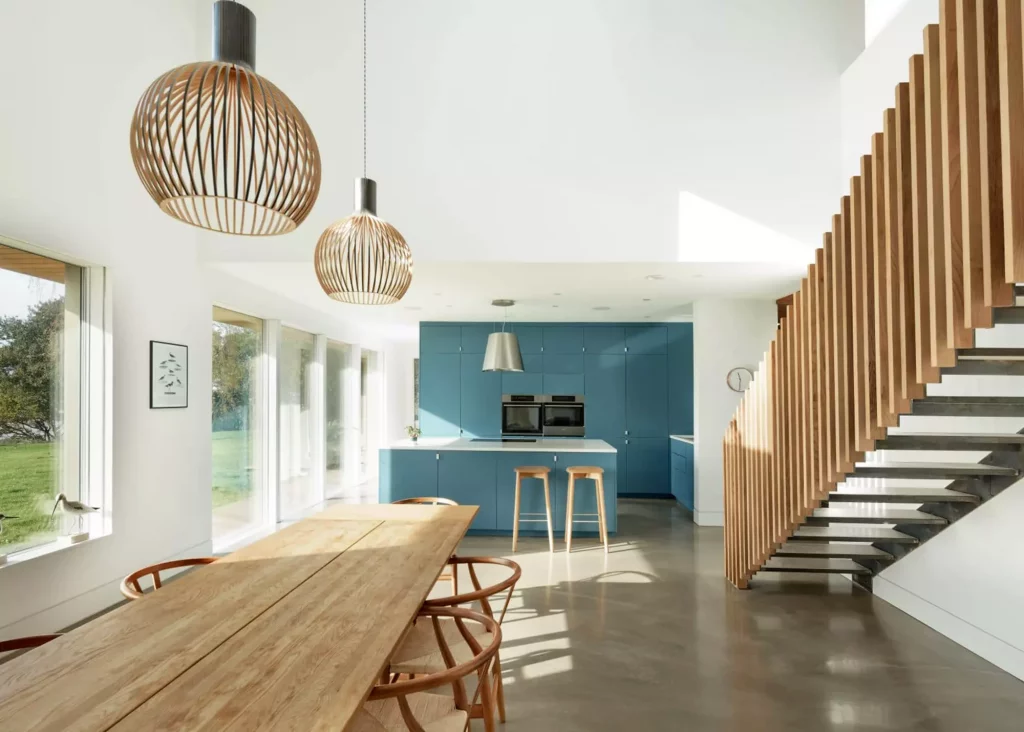
A clean and minimal aesthetic has been used for the interior, making a nod to Scandinavian design with its sleek shapes and woody tones throughout
Designed and built to Passivhaus principles, the window reveals and first floor overhang act as solar shading, whilst western red cedar cladding ages beautifully and helps blend the building in to the area.
Build It Award-winning Gryphon House is a stunning 5-bed home built by owners Chris and Jenny Shepperd.
This stunning Warwickshire house is timber frame clad in stone, with some fibre cement cladding and a slate roof. It incorporates beautiful features such as a floating staircase, external balconies around the rear elevation, and a vaulted ceiling over the kitchen with a bridge to the bedrooms over the garage.
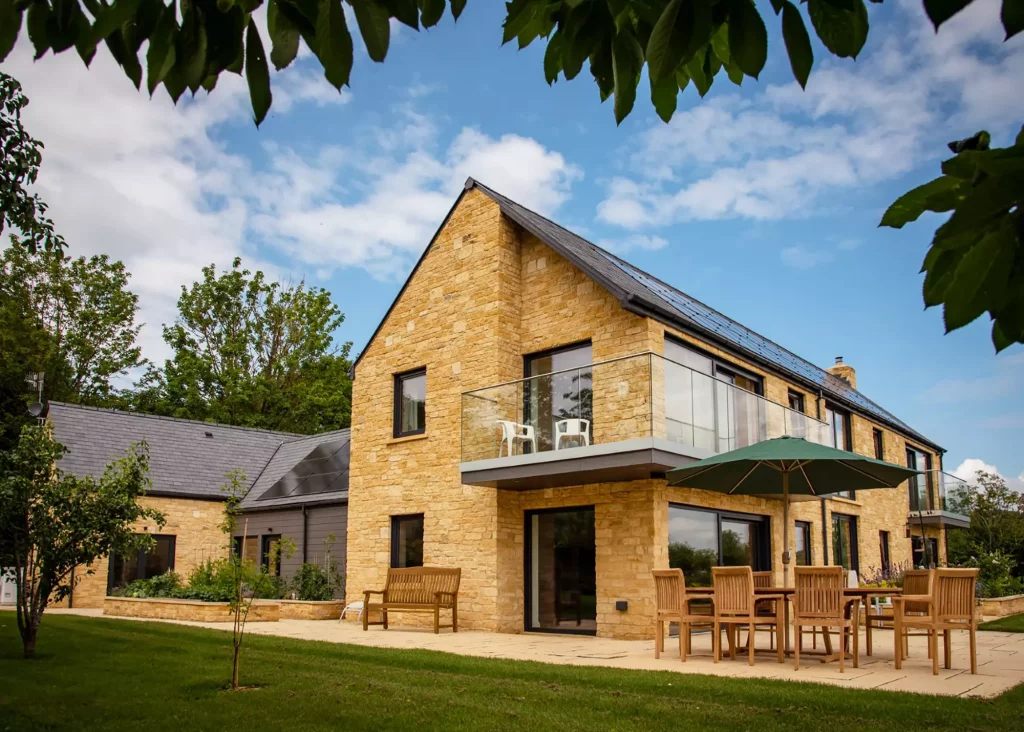
Large triple glazed sliding doors in four rooms lead to patios with balconies, providing a light, bright and sunny interior
Energy efficiency and Passivhaus standards were at the forefront of design, and the Shepperds chose the TechVantage S system – unique to Frame Technologies – because of the energy performance it would provide.
TechVantage S is a breathable closed panel system fully filled with 140mm 035 timber rafter batt in the factory. The system is lined on the inside with a 50mm PIR Liner and service batten and plasterboard with a Thermo breather paper on the outside.
The complete house achieved a Standard Assessment Procedure rating of 99, which is exemplary, and achieved the highest Passivhaus standard when tested for air tightness.
More Inspiration: Energy Conscious Home with a Bespoke Timber Frame
Having searched for years to find a suitable plot to house both the family and livestock, an opportunity knocked when Martin and Anglea Jenkins purchased this farm in Cambridgeshire.
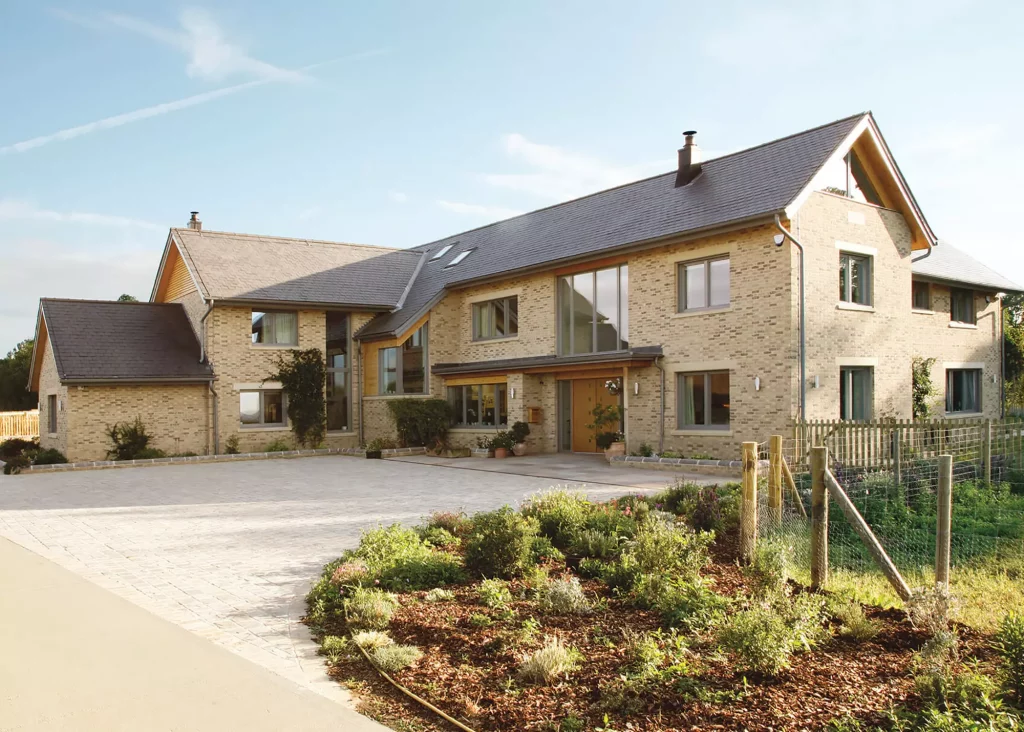
This sizable property features three floors, incorporating three reception rooms, five ensuite bedrooms, two bathrooms, a mezzanine floor, a kitchen that opens up onto a conservatory and a farm office
After three years of waiting for building consent, the couple ended up using the Beattie Passive System as it had been recommended as a top eco building solution. This is a construction method that provides remarkable levels of insulation, eliminating cold bridges within the structure, and is the first of its kind in the UK to be certified by the Passivhaus Institute in Germany.
The system works by creating a void around the whole house, which is then filled with Ecobead spray foam. This is pumped in as a liquid, which solidifies once in place, creating a sealed envelope.
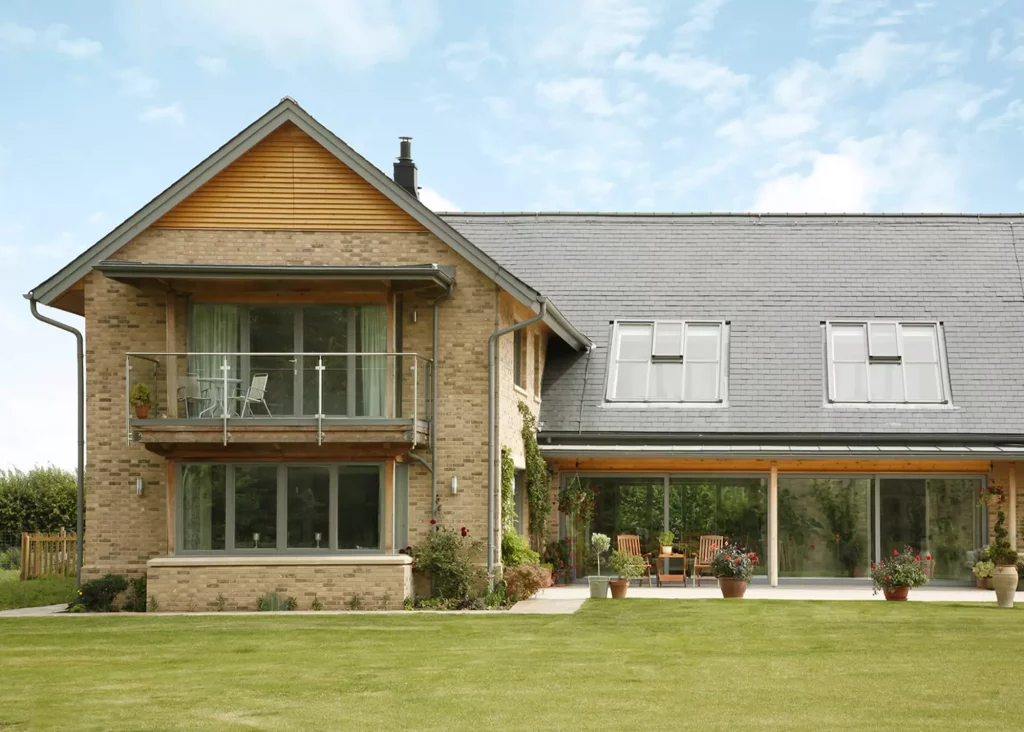
The home balances both aesthetic and function to reach its acclaimed eco standard, using a light brick to compliment its surroundings and Beattie’s Passive System to maximise performance and insulation
The couple’s eco ambitions were achieved thanks to the renewable technologies and the property’s highly insulated structure. “The house benefits from being next to outbuildings with 29.9kW of solar energy production, so when the sun shines the electricity is effectively free,” says Martin.
Read More: How to Get Planning Permission in the Countryside
